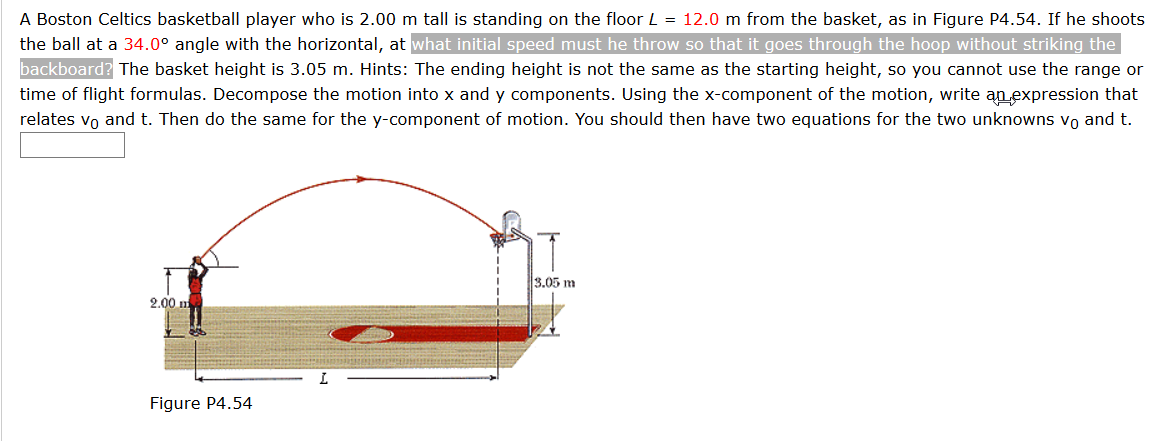What initial speed must he throw so that it goes through the hoop without striking the backboard?

1 Answer
12.1 m/s
Explanation:
The key to these problems is to use the fact that the horizontal and vertical components of motion share the same time of flight.
I'll set the point of launch as the origin and adopt the convention that "up is +ve". This means the change of height = 3.05 - 2.00 = 1.05 m.
Considering the horizontal component, the velocity is constant:
For the vertical component we can use:
This becomes:
From
Substituting this into
We know that:

